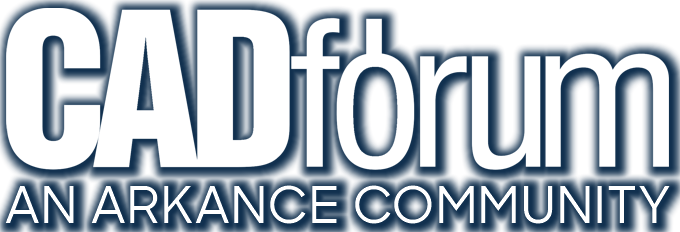 Discussion forum
Discussion forum
?CAD discussions, advices, exchange of experience
 CAD discussion forum - ask any CAD-related questions here, share your CAD knowledge on AutoCAD, Inventor, Revit and other Autodesk software with your peers from all over the world. To start a new topic, choose an appropriate forum.
CAD discussion forum - ask any CAD-related questions here, share your CAD knowledge on AutoCAD, Inventor, Revit and other Autodesk software with your peers from all over the world. To start a new topic, choose an appropriate forum.
Please abide by the rules of this forum.
|
Post Reply 
|
| Author | |
AliveInTheLab 
RSS robots 
Joined: 20.Nov.2009 Status: Offline Points: 425 |
 Topic: #AU2014: Summary of Jeff Kowalski's Keynote Remarks Topic: #AU2014: Summary of Jeff Kowalski's Keynote RemarksPosted: 02.Dec.2014 at 10:30 |
|
(Part 1 of 2) Today is December 2, but I am actually writing this on November 20. I am preparing this blog post today. I have been in on the meetings where team members like Maurice Conti, Bill O'Connor, Erin Bradner, Bob Kelly, and Jonathan Knowles have been preparing the keynote presentation for AU 2014. I took their proposed text and whittled it down to my own summary. Things can change between now and when it is actually delivered, but here is my take on the key points that CTO, Jeff Kowalski, delivered. Design like Nature using a Taxonomy All of the buildings and bridges, cars and machines, and products and devices have one thing in common. They're all dead, but that is about to change. At Autodesk, we're starting to look at technology, and design itself, through the lens of Nature — a complete inversion of the traditional perspective of looking at the natural world through the lens of technology. Nature fundamentally designs by taking the best existing solution to a problem and iterating. Unlike Nature, we have historically started our design projects essentially from scratch. So, what if, like Nature, we could access every design, schematic, asset, and idea that had ever been created to help solve our particular design challenge? At Autodesk we're working on ways to better understand and navigate existing solutions that might be relevant to your next design project. Using machine learning algorithms, we can now discover patterns inherent in huge collections of millions of 3D models. In short, we can now discover and expose the content and context of all the current designs, for all the next designs. Taxonomies are based on organizing things with shared characteristics. But they don't really concern themselves with the relationships those things have with other types of things — something we could call context. Adding context reveals not only what things are, but also expresses what they're for, what they do, and how they work. So, we're working on a companion technology to help the computer understand how individual components relate in an assembly contextually. We are developing a system that learns the same way we do, by referencing mechanical engineering textbooks, building codes, parts catalogs, and by observing real world examples. The outcome is a tool that works in a lifelike manner, supporting the way we solve problems naturally. Leverage Generative Design to Let Computers Do More of the Work for You There's another way that Nature differs radically from humans in the way it designs. Nature explores all of the solutions that optimize performance for a given environment — what we call evolution. We need to do the same thing with our designs. But first we have to stop "telling the computer what to do," and instead, start "telling the computer what we want to achieve." With Generative Design, by giving the computer a set of parameters that express your overall goals, the system will use algorithms to explore all of the best possible permutations of a solution through successive generations, until the best one is found. Create Living Designs that Adapt to Their Environments Our current response to the changing world is planned obsolescence: when the world changes, and our product doesn't, no problem — we just throw out the old and bring in a new one. It's the same for buildings, with just a longer time frame. The fundamental difference is that the things we design now and make in the future must do three things: Sense, Respond, and Collaborate. A lot of people would call this the Internet of Things. Because the term "Internet of Things" implies a false hope of an emergent experience, what we really need is a "Community of Things" — a collection of individual entities designed to actively and purposefully work together. Experiences don't come from the things, they come from designers. Combine Nature and Technology for The Future of Making Things Looking ahead, our coopting of Nature will eventually become more of a two-way cooperation, as the twin engines of technology and Nature are increasingly intertwined, in a mutually beneficial dynamic. This is just the beginning. There are whole territories ahead where we can take Nature's strengths and extend them with technology's power: creating things that transcend the limits of both. On the one hand this sounds like some fairly mind-bending stuff, but on the other hand it's already started. At Autodesk it's our job to spot the emerging trends causing the revolutions that fundamentally change how and what we all make. But of course, it's designers (you) that are going to actually bring life to design. Thanks Maurice, Bill, Erin, Bob, and Jonathan. Natural design is alive on the lab. Go to the original post... |
|
|
It's Alive in ihe Lab - Autodesk Labs blog by Scott Sheppard
|
|
 |
|
Post Reply 
|
|
|
Tweet
|
| Forum Jump | Forum Permissions  You cannot post new topics in this forum You cannot reply to topics in this forum You cannot delete your posts in this forum You cannot edit your posts in this forum You cannot create polls in this forum You cannot vote in polls in this forum |
This page was generated in 0,227 seconds.
![CAD Forum - tips, tricks, discussion and utilities for AutoCAD, Inventor, Revit and other Autodesk products [www.cadforum.cz] CAD Forum - tips, tricks, discussion and utilities for AutoCAD, Inventor, Revit and other Autodesk products [www.cadforum.cz]](/common/arkance_186.png)









 #AU2014: Summary of Jeff Kowalski's Keynote Remarks
#AU2014: Summary of Jeff Kowalski's Keynote Remarks Topic Options
Topic Options


